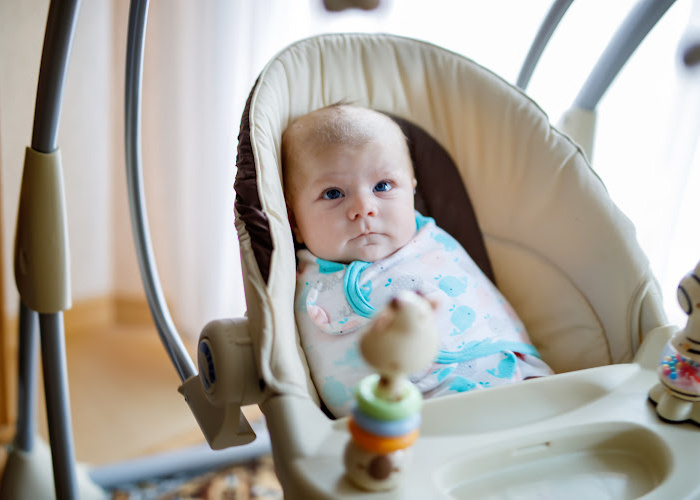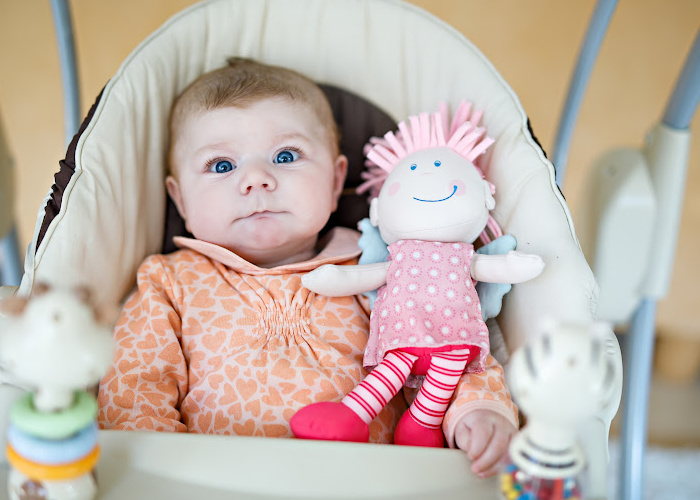It's crucial to know that students with autism and ADHD need special study strategies. Autism…

Baby Doesn’t Cry When Hungry: Could it be Autism?
The early signs of autism in babies can be subtle and easy to miss. One potential red flag is lack of crying or fussing when hungry. Typically, babies cry frequently to signal their needs. But some babies on the autism spectrum don’t communicate hunger through crying.
Why Don’t Some Babies with Autism Cry When Hungry?
There are a few possible reasons why a baby with autism may not cry when hungry:
Sensory differences – Babies with autism may have differences in sensory processing. Hunger signals may not register or cause discomfort like they would for a neurotypical baby.
Communication differences – Babies later diagnosed with autism often have delays in babbling, gestures, and facial expressions. They may lack the communication skills to express hunger through fussing or crying.
Reduced social motivation – Seeking social interaction through crying is less reinforcing for babies with autism. They tend to be content playing alone and lack motivation to engage others.
High pain threshold – Some research indicates that autistic individuals have a higher pain threshold and tolerance than neurotypical people. Hunger may not be painful enough to prompt crying.
Gastrointestinal issues – A significant subset of autistic children experience GI problems like reflux, constipation, or stomach pain. These issues could dull hunger signals.
Other Early Signs of Autism
Lack of communicative crying is just one of many possible red flags for autism in babies. Here are some other key early indicators:
- No babbling or pointing by 12 months
- No words by 16 months
- Poor eye contact
- Lack of interest in faces and social interaction
- Little imitation or response to their name
- Repetitive behaviors like rocking, spinning, or hand flapping
- Unusual reactions to sensory input
- Intense focus or attachment to objects rather than people
- Difficulty adapting to changes in routine
- Loss of language or social skills previously acquired

Should You Worry if Your Baby Isn’t Crying for Food?
Not all babies who don’t cry when hungry end up on the autism spectrum. Some are simply easygoing or have different ways of signaling needs. However, lack of hunger cries combined with other red flags warrants an evaluation. Early intervention can greatly improve outcomes.
Around 18 months, a pediatrician can screen for autism using the M-CHAT questionnaire. They may refer you to a specialist like a developmental pediatrician, psychologist, or speech-language pathologist for further assessment if any concerns arise.
Diagnosing autism before age 2 is considered very early. But some experienced clinicians comfortable assessing infants can diagnose babies as young as 12 to 18 months.
Getting an Evaluation for Your Non-Crying Baby
Here are some tips for getting your quiet baby evaluated:
- Track and document any missed developmental milestones or unusual behaviors. Share these with the pediatrician. Be specific.
- Insist on following up if the pediatrician is not concerned after an initial screening. Request a referral to a specialist.
- Contact early intervention services in your state to request an evaluation. You don’t need a doctor’s referral.
- Seek out autism specialists, like those at university hospitals, to assess your baby if you don’t have access to qualified clinicians locally.
- Have your baby’s hearing tested to rule out hearing impairment as the cause of lack of crying.
- Get input from experienced caregivers or therapists who have spent time with your baby. They may have valuable insights.
- Trust your instincts! You know your baby best. Push for a thorough evaluation if you suspect something is off.
Intervention Services for Babies Showing Signs of Autism
If your baby is diagnosed with autism or flagged as at-risk, taking advantage of early intervention services is crucial. Many proven therapies can help boost social communication, language, cognition, and adaptability.
Early intervention options include:
Applied behavior analysis (ABA) – Uses positive reinforcement to teach skills. Especially effective for communication, social, and adaptive behaviors.
Speech therapy – Builds verbal communication abilities. Useful for nonverbal or minimally verbal toddlers.
Occupational therapy – Helps with sensory integration, motor skills, feeding issues, and daily living activities.
Physical therapy – Improves gross motor development, strength, balance, and coordination.
Developmental social-pragmatic model – Focuses on motivating social communication through play and engagement.
Starting intervention as early as possible helps maximize autistic children’s potential to learn key skills during the most crucial developmental windows.
Conclusion
Lack of hunger cries in babies can signify an underlying issue like autism that warrants evaluation. Together with other missed milestones or atypical behaviors, it should raise a red flag. Early screening and intervention are essential for giving babies who don’t cry when hungry the best possible outcome.
Paying attention to subtle signals and trusting parental intuition are key. With access to appropriate therapies and support, even very young autistic babies can thrive.

Frequently Asked Questions
Many parents wonder if a baby not crying for food could mean autism. Here are answers to some commonly asked questions on this topic:
What are some reasons a baby with autism might not cry when hungry?
Babies with autism may not cry when hungry due to differences in sensory processing, communication delays, lack of social motivation, high pain thresholds, or gastrointestinal issues. Autistic babies may not experience or express hunger like neurotypical babies.
What are the early signs of autism besides not crying when hungry?
Other early red flags for autism include lack of eye contact, little interest in faces, no babbling or pointing by 12 months, no words by 16 months, lack of response to their name, repetitive behaviors, and intense focus on objects over people.
What is the typical age for an autism diagnosis?
Autism can often be reliably diagnosed by 18 to 24 months but sometimes as early as 12 months by experienced clinicians. Early screening at 18 months is recommended.
Should I worry if my baby doesn’t cry for food?
Lack of hunger cries alone is not necessarily a sign of autism, but it warrants monitoring developmental milestones. Consult your pediatrician with any concerns.
How can I get my non-crying baby evaluated for autism?
Discuss concerns thoroughly with your pediatrician, request referrals to specialists, contact early intervention services, seek evaluations at autism specialty clinics, and trust your parental instincts.
What are the best early interventions for babies showing possible signs of autism?
Applied behavior analysis, speech therapy, occupational therapy, physical therapy, and developmental social-pragmatic models are proven early autism interventions.
What is applied behavior analysis (ABA) therapy?
ABA therapy uses positive reinforcement to motivate learning of social, communication, motor, play, and daily living skills in young autistic children. It is a highly effective early intervention.
Why is early autism intervention so important?
Starting intensive therapies as early as possible capitalizes on crucial early developmental windows when babies’ brains are rapidly growing and forming critical connections.
How much progress can early intervention help my baby make?
Starting intensive therapies by age 18 months can significantly improve outcomes for many autistic babies in language, cognition, social skills, and adaptability.
What is the best way to support an autistic baby who doesn’t cry when hungry?
Respond to all subtle cues, utilize treatment plans from qualified clinicians, stick to consistent mealtime routines, provide sensory-friendly foods, and collaborate closely with caregivers and therapists.



This Post Has 0 Comments